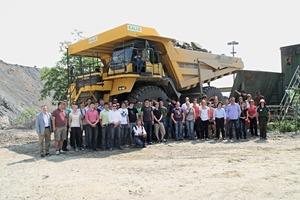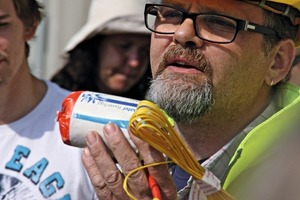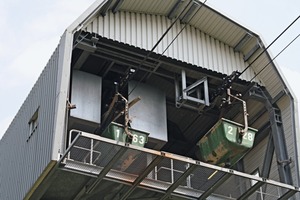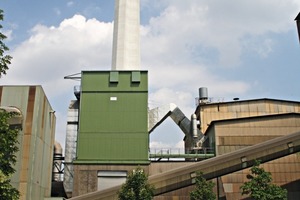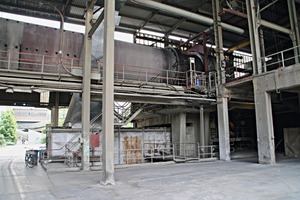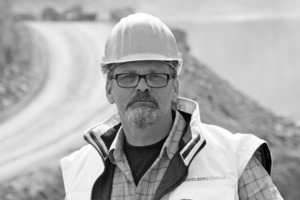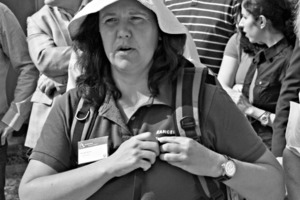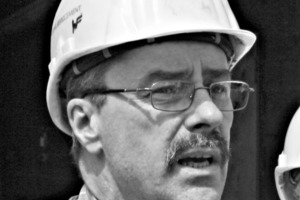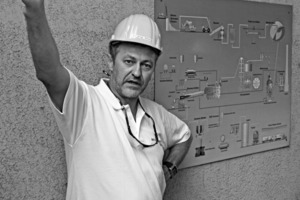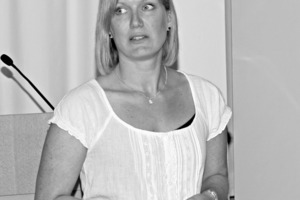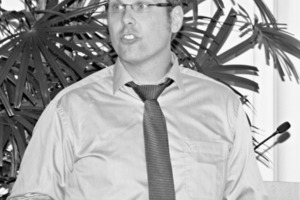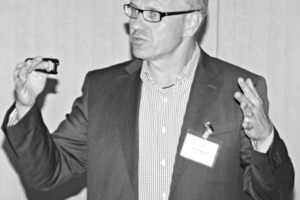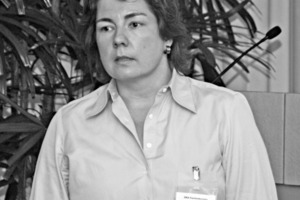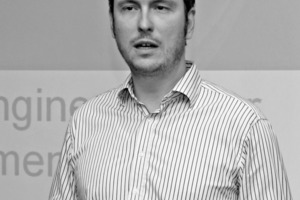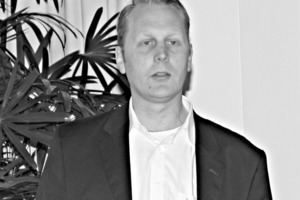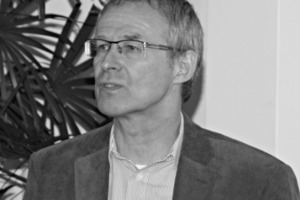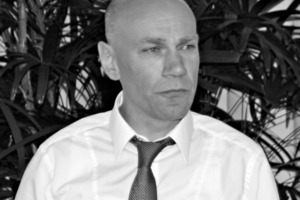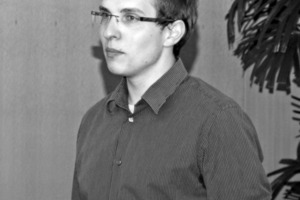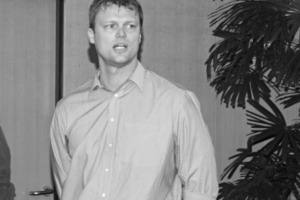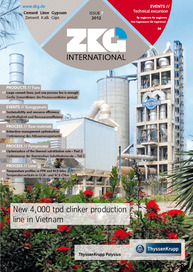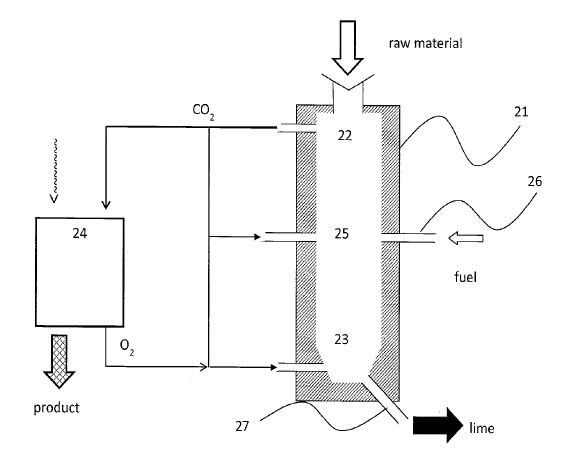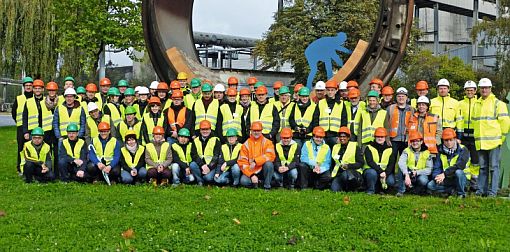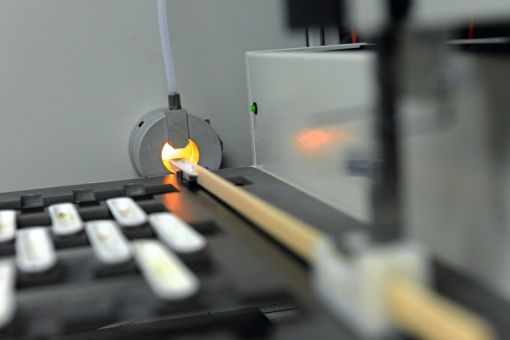The cement industry is a fascinating, highly varied and extremely demanding sector. Nearly 50 future male and female engineering students from the fields of process- and mechanical engineering, in addition to other related disciplines, saw this at first hand during the 2012 ZKG Technical Excursion. This year’s host was HeidelbergCement; at the company’s Leimen plant and at its main offices in Heidelberg the students were able to gain both theoretical and practical insights into cement production. The individual process operations were examined jointly with industrial partners, and were then discussed in depth. The first item on the agenda this year was a visit to the Nussloch quarry (Fig. 1). Uwe Klein (HeidelbergCement) introduced the interested participants to various blasting-based methods for the extraction of mineral resources (Fig. 2). Then: so much for theory, on to practical matters: the visitors were able to observe a real-life blasting operation. Melanie Meier (Geopark Ranger) then focussed on local geology, flora and fauna. Biodiversity, renaturing and sustainable quarry management are all aspects high on the agenda at HeidelbergCement, a globally active cement group. The visit progressed from the quarry to the plant, where the participants took a guided tour along the production chain in three groups, led by Wilfried Fendler, Herwig Marx and Wolfgang Bender.
The Leimen cement plant
At Leimen, the feed materials obtained from the Nussloch quarry are fed to a crusher, and then on to a cross-belt analyser. From here, instantaneous data on material composition are relayed to the plant, around 6 km away. Direct feedback to the wheel-loader operator at the quarry tells him whether advance correction of the feed material mix using pure limestone or loess is necessary. The material then passes from the belt system to a cableway, which conveys it across the remaining 5.6 km to the plant in 250 skips (Fig. 3). The blending bed (Koch Transporttechnik GmbH) has a capacity for 18 000 t of feed material. The materials are stored and homogenised in the blending zone before being reclaimed by means of a scraper machine and fed on to the feed materials mill, a vertical roller design (Gebr. Pfeiffer SE). This mill was fitted with a new bag filter (Scheuch) to ensure adherence to the emissions limits for the grinding and drying plant in 2008 (Fig. 4). From here, the feed material passes into a homogenisation silo and is then conveyed to a pan granulator. Leimen is one of the few plants in Germany operating a Lepol kiln (Fig. 5), and the pan granulator is used to aggregate the material to granules, which are then forwarded to the coal-fired grate preheater, with its drying and heating chambers. On leaving the Lepol preheater, the granules are at a temperature of around 850° C and are next fed into the Lepol kiln. Used tyres are metered into the mix at the kiln inlet. The kiln system’s burners are fuelled with production-generated industrial plastic waste, used oil, paint waste, lignite, petroleum coke and animal meal. The two kiln systems have permissions for 1000 t/d and 1500 t/d, respectively. The reverse-flow clinker cooler (Fuller) cools the clinker when it leaves the kiln. The kiln lines are dedusted by means of electrostatic precipitators. From the downstream clinker silo, the clinker is fed to the grinding circuits, which consist of a material-bed roll mill for granulated blast furnace slag and two-chamber tube mills, which are operated in the cyclone classifier mode. The cement is also separated off by means of cyclone air classifiers, and then fed to the cement silos, from which the various end products can be forwarded to the packing lines (around 10 %) or shipped directly by road in silo vehicles (around 90 %).
Papers and discussions
The programme of papers began at the main HeidelbergCement administration building in Heidelberg once the participants had had the opportunity of seeing cement production in practice for themselves. The speakers examined the following topics:
Preparation of feed materials (Norman Heuckmann, Project Engineering, ThyssenKrupp Polysius AG, Beckum/Germany)
High-precision metering in cement plants (Arnd Kuralt, FLS Pfister GmbH, Augsburg)
Modern preparation technology for grinding, classifying, drying, hydration and calcining (Dr. Caroline Woywadt, Manager, Process Department, Gebr. Pfeiffer SE, Kaiserslautern)
Pyroprocess engineering in modern cement plants (Dr.-Ing. Heiko Schürmann, Project Manager, KHD Humboldt Wedag GmbH, Cologne)
Refratechnik refractory materials – innovations for the cement industry (Dr. Ulrich Zielinski, Area Sales Manager Central and Eastern Europe)
Bulk materials extraction systems (Reiner Furthmann, Technology Director, Aumund Fördertechnik GmbH, Rheinberg)
Careers at HeidelbergCement AG: focus on the HeidelbergCement group (Marion Kinscher, Head of Human Resources Development Germany, HeidelbergCement AG, Heidelberg)
The aim of the papers was to provide the technical background to the processes already seen in action in the plant. Citing numerous sub-processes as examples, the speakers illustrated that the requirement profile for cement industry engineers is extremely diverse, and demands both technical depth and detailed knowledge. Kristina Brehm (Polysius) and Erik Tresbach (KHD) presented their companies and their requirement profiles for young engineers from the viewpoint of the human resources managers.
For the concluding survey of career opportunities at HeidelbergCement Marion Kinscher introduced ftwo young engineers who are currently undergoing or have completed the HC trainee programme for the technical specialists of tomorrow. Thomas Schmidt pointed out that HeidelbergCement provides the support necessary for the further personal development of young people who demonstrate interest in this industry. Jens Lehning emphasised that the cement industry, compared to a large range of other sectors, provides a broad, diversified and highly varied field of work for young engineers. Personal professional development can progress quickly here, and there are great potentials for taking on responsible and exciting tasks at an early stage.
The participants then made extensive use of the opportunity of conversing with the speakers. Their unanimous verdict at the end of the event: all expectations were fulfilled, and: HeidelbergCement’s on-the-spot organisation was nothing less than perfect.

